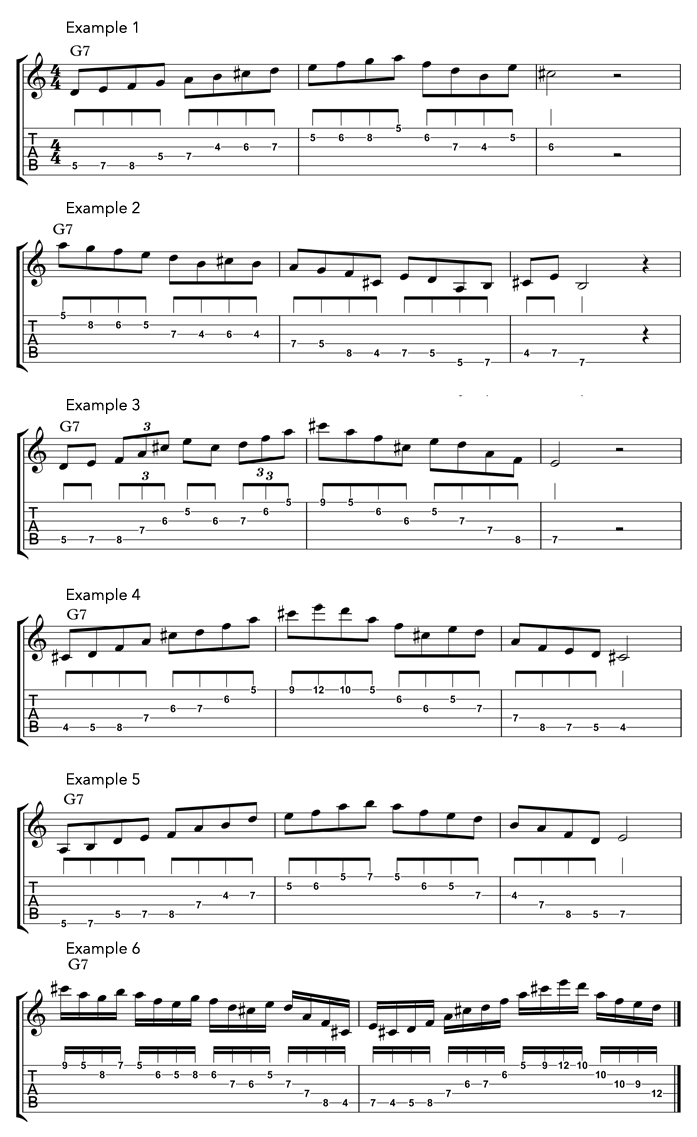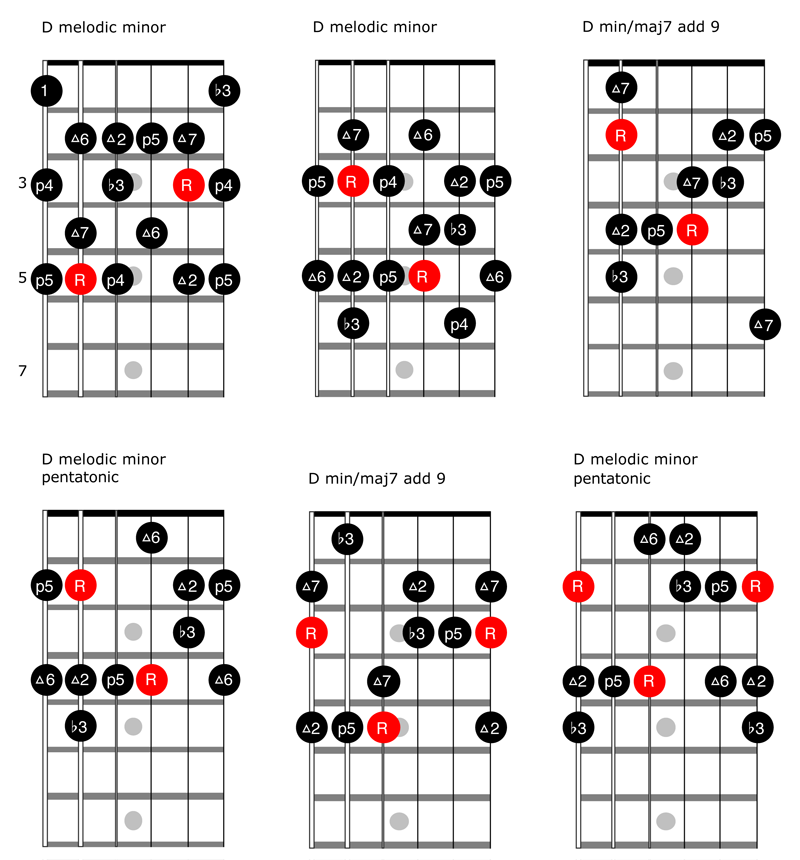Conceptual Jazz, an Insight into the Improvisational Minds of the Jazz Greats

In over 35 years of working as a professional guitarist and more than 45 years of dedicated study I have discerned that there are three fundamental aspects to the musical experience. They are the mental, physical and spiritual. The mental aspect encompasses the accumulation of knowledge and experience especially in the realms of study and listening.
The physical aspect enables us to execute ideas we have gleaned from our experience, study, and training. The spiritual aspect is one of connection. Connecting to the truth inside ourselves, expressing that truth and in turn connecting to the truth inside of others. For me personally, the spiritual aspect includes a conscious effort to develop my humanity and character.
In this column I would like to strive with my fellow jazz guitarists to open up doors to experiencing these three aspects in new and exciting ways.
Let’s get to it. This issue I’d like to examine a strategy of playing through changes that I have found to be most useful. This strategy enables me to take complex harmonic information and reduce it to one common thread. The strategy is know as converting to minor or reducing to minor.
This strategy has been championed by one of the world’s greatest jazz guitarists, Pat Martino, and used extensively in some form or fashion by virtually every great improviser.
Here is how it works: The idea of reducing or converting to minor is fundamentally a chord substitution, where one chord or scale is substituted over another to create an interesting color, or sound texture. This creates a freshness in one’s playing.
To create a chord substitution, we first start with the original chord or target chord. We then determine on which interval of the target chord to build our substitution.
Example:
G7 is our target chord. G7 is spelled:
G B D F
R 3 5 b7
In this case, the minor chord substitution is built on the fifth of the target chord, which is a D, so we would substitute D minor over G7.
Target chord
G B D F A
R 3 5 b7 9
D min substitution
Using a D minor triad over the G7 then gives us the color tone of the major 9th. The sound of jazz in large part owes to the use of harmonies that extend beyond the octave. These chord extensions, or upper partials as they are often called, add a rich texture in sound.
To take this a step further we can use the ascending, or jazz melodic minor scale, to essentially play the hippest extensions.
The ascending melodic minor scale, unlike the standard melodic minor scale, retains the raised 6th and 7th degree both ascending (going up) and descending (going down) the scale.

Ascending melodic minor scale:
R 2 b3 4 5 6 7 8
Again, taking G7 as our target chord, the minor chord substitution or conversion would be made on the 5th of G7, which is D. We then could substitute D melodic minor over our G7 chord.
D melodic minor is spelled:
D E F G A B C# D
R 2 b3 4 5 6 7 8
Used in harmony with the G7 chord we find these tones:
G B D F A C# E
R 3 5 b7 9 #11 13
Musical examples 1 and 2 utilize the D melodic minor scale over a G7 chord. Example 1 ends on the C# which is the sharp 11 or the G7 chord, a very evocative choice, and one of my favorites.
Many times, using an entire scale is inefficient, so sometimes I will use arpeggios that five the sound or color of the scale without all the notes. In the case of converting to minor, I find two particularly useful: the minor/major 7th add 9 chord and the melodic minor pentatonic, which my teacher, David Bloom, hipped me to. Here is the construction as related to the melodic minor scale:
D melodic minor
D E F G A B C# D E F G A B C# D
R 2 b3 4 5 6 7 8 9 b10 11 12 13 14 15
D min/maj 7 D F A C# E
add 9 R b3 5 7 9
D melodic D E F A B
minor pentatonic R 2 b3 5 6
Musical examples 3 and 4 utilize the D minor major 7th add 9 arpeggio over the G7 chord. Once again, I like to end a line or phrase on either the sharp 11 of the chord or, as in example 3, the 13th (E against G7 is the 13th). Both, in my opinion, are beautiful color tones.
Example 5 utilizes a D melodic minor pentatonic over the G7 chord.
Improvisers will often use arpeggio ideas in conjunction with scalar ideas for a full effect. In example 6, I begin the line with a melodic scale sequence and ease into a minor major 7th add 9 arpeggio.
I would suggest taking each musical example and transposing each of them to all 12 keys. Then play through each (in all 12 keys) in the same position. This will enable you to better master the fretboard and play through changes.
Normally, I will sequence an idea through either the circle of 5ths or 4ths. Here is a diagram showing minor reduction for dominant 7ths through the cycle of 5ths:
Dominant 7th Minor Reduction
C7 G minor
G7 D minor
D7 A minor
A7 E minor
E7 B minor
B7 F# minor
Gb7 Db minor
Db7 Ab minor
Ab7 Db minor
Eb7 Bb minor
Bb7 F minor F7 C minor
Also, try these fingering positions for melodic minor pentatonic and minor major 7th add 9 arpeggios, and the melodic minor scale. I have circled the roots.

Well that about does it for this time. I hope you found some of these ideas useful. For me, the beauty of music is in continuing to challenge myself to keep growing. Next time I hope to cover minor conversions over other types of chords culminating in an examination of their use in I VI II V in both major and minor.

Peter Lerner has toured with Grammy award winning pianist Ramsey Lewis and has played duets on NBC and CBS with acclaimed trumpeter Orbert Davis. Peter has performed with Bill Russo’s Chicago Jazz Ensemble at the Jazz Showcase where he performed with such luminaries as Lee Konitz.

